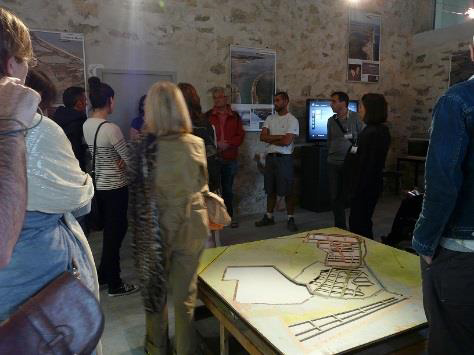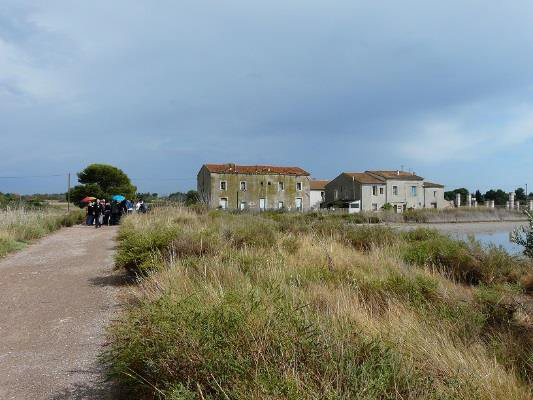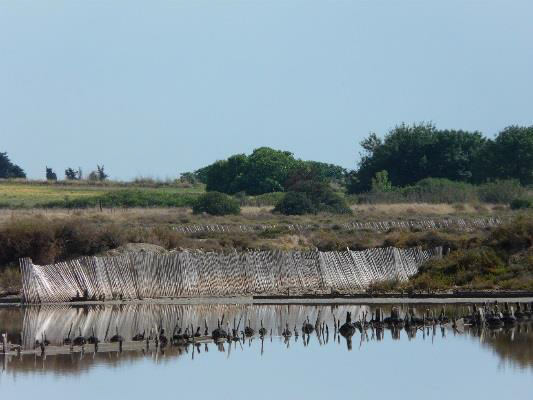 La visite du site des Salines de Villeneuve-lès-Maguelone a permis d'échanger autour de la valorisation et la préservation d'un site naturel remarquable et de questionner plus largement les problématiques et enjeux majeurs des lagunes méditerranéennes.
La visite du site des Salines de Villeneuve-lès-Maguelone a permis d'échanger autour de la valorisation et la préservation d'un site naturel remarquable et de questionner plus largement les problématiques et enjeux majeurs des lagunes méditerranéennes.
L’accompagnement et les présentations tout au long du cheminement ont été réalisés par Rutger de Witt et Patrick Montfort de l’UMR 5119 ECOSYM et par les équipes du Conservatoire d’Espaces Naturels du Languedoc-Roussillon (CENLR) notamment Ludovic Foulc et Julien Caucat.
 Lieu naturel d’épuration et de montée des eaux, réservoir de biodiversité, lieu de loisirs et d’activités économiques, les Salines jouent un rôle important pour la conservation du patrimoine naturel des sites RAMSAR et Natura 2000 des étangs Palavasiens.
Lieu naturel d’épuration et de montée des eaux, réservoir de biodiversité, lieu de loisirs et d’activités économiques, les Salines jouent un rôle important pour la conservation du patrimoine naturel des sites RAMSAR et Natura 2000 des étangs Palavasiens.
Outre ces classements, au titre de la biodiversité, les Salines de Villeneuve sont également remarquables d’un point de vue paysager : vestige de l’exploitation salinière sur le littoral languedocien elles sont incluses dans le site classé de l’étang de Vic et de ses berges, au titre de la loi de 1930 sur la protection des paysages.
 C’est en 1992 que le conservatoire du Littoral rachète les 180ha de salins pour en faire un espace naturel protégé pour sa faune et sa flore remarquable, mais également en mémoire de ce passé qui a marqué le paysage et les esprits. Le site prendra alors le nom officiel de « Salines de Villeneuve ».
C’est en 1992 que le conservatoire du Littoral rachète les 180ha de salins pour en faire un espace naturel protégé pour sa faune et sa flore remarquable, mais également en mémoire de ce passé qui a marqué le paysage et les esprits. Le site prendra alors le nom officiel de « Salines de Villeneuve ».
Fin 2010, le Conservatoire du Littoral a lancé l’actualisation du plan de gestion. Une première phase de diagnostic (Fonctionnement hydraulique, état de conservation, topographie, cartographie des herbiers aquatiques, qualité de l’eau, pâturage, fréquentation, concertation avec les usagers), a permis de déterminer les enjeux et les objectifs de gestion. Suite à cette première phase, un programme d’actions sur 5 ans a été validé en début d’année 2012.
(CENLR)
Pour en savoir plus :
http://www.cenlr.org/gerer/sites/salines
http://www.villeneuvelesmaguelone.fr/index.php/espaces-naturels/5-les-salines-de-villeneuve

